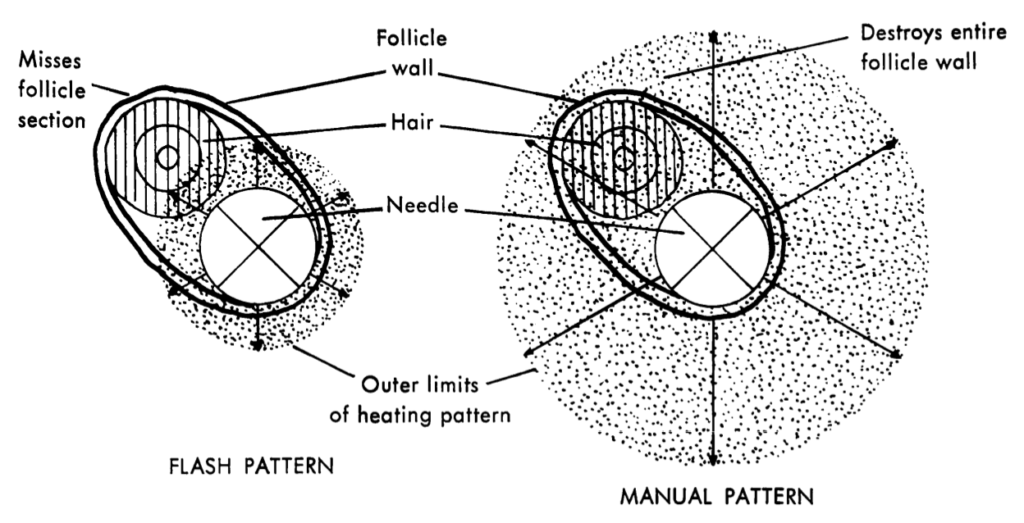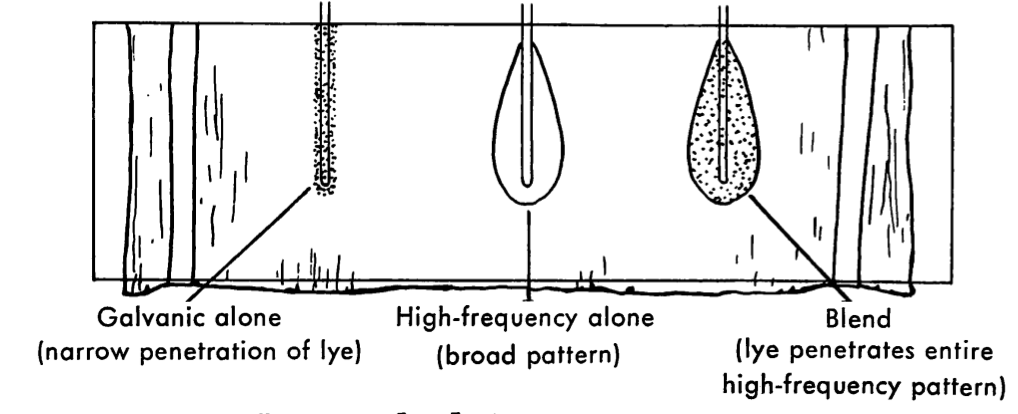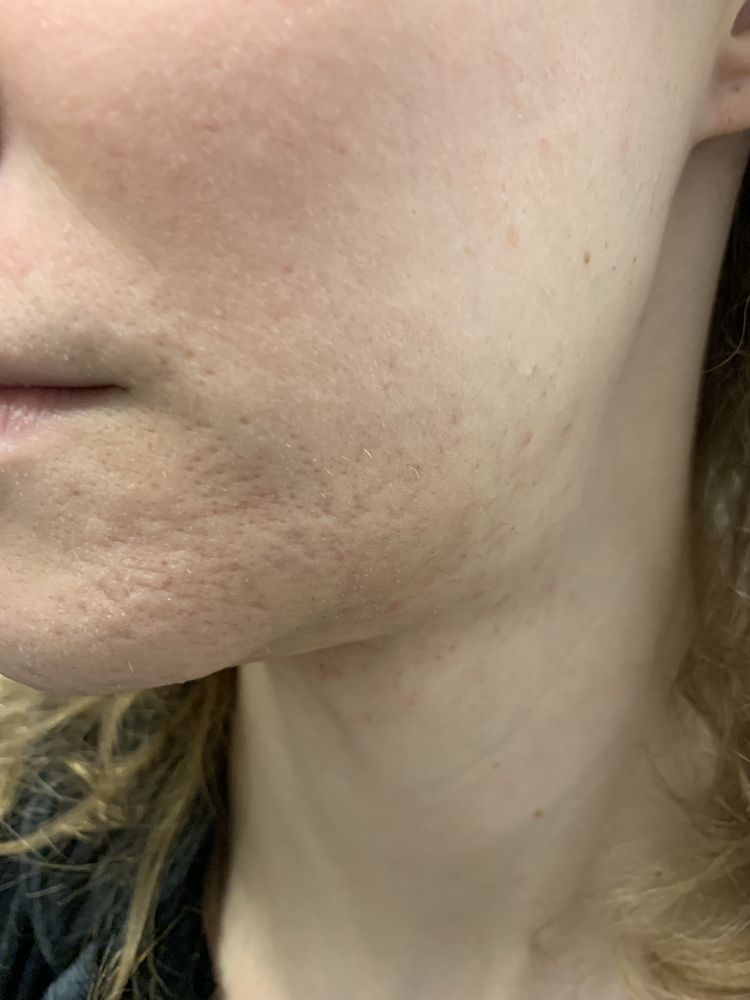Thermolysis is the destruction of tissue by heat, and it is the method of hair-removal favored by most electrologists practicing today. The reason is simple: thermolysis is fast. Prior to the emergence of transistorized epilators, thermolysis timing was manually controlled and relatively slow. Individual hairs could be treated in a few seconds each. These days, thermolysis is virtually synonymous with “flash thermolysis”, defined as any thermolytic technique in which hairs are treated in a fraction of a second.
Why don’t you use thermolysis?
To put it simply, I find flash thermolysis to be ineffective on coarse beard hair, and I find both flash thermolysis and the slower, manual technique to be too damaging to the skin when used on anything coarser than fine peach fuzz.

The above figure demonstrates the limitations of flash thermolysis on coarse beard hair.1 Note that we are looking down into the follicle, seeing a cross-section of both the hair and the electrolysis needle.
On the left is depicted the heating pattern caused by a quick burst of alternating current, a heating pattern that is far too narrow to fully destroy the dermal papilla of a coarse hair. This hair is insufficiently treated and will regrow. Repeated treatments will cause a gradual build-up of scar tissue, and as this scar tissue contracts, the surface of the skin begins to take on a waxy, puckered appearance.
On the right is a sufficiently treated hair. However, note that the heating pattern radiates outward into the surrounding tissue, far from the follicle. When heat is similarly applied to nearby follicles, these heating patterns overlap, resulting in scars where the skin has been treated multiple times. It is much more difficult to overtreat with galvanic electrolysis in this manner. Heat can penetrate the skin effectively, whereas lye, being a physical substance, is restricted to the follicle itself.

if thermolysis is so damaging, why do electrologists use it?
As strange as it may seem, many electrologists simply do not see scars. Perhaps this inability is merely a simple unawareness of what to look for. Perhaps cognitive dissonance plays a role. In any case, I’ve had electrologists tell me that they see no marks on my own face, whereas I’ve had dermatologists comment on my skin’s extensive scarring. (Perhaps I have high standards. What trans woman doesn’t?) There are plenty of images of severe thermolysis scarring on Susan Laird’s website, but the image that reflects what I often see is the one below.

If not for the caption, many people would look at this image and see nothing wrong. This discoloration is particularly hard to see under the harsh light of an electrologist’s headlamp, but it stands out strikingly in diffused sunlight.
Not all scarring is so subtle. Below are some icepick scars from aggressive thermolysis.

The operator who left these marks is a prominent contributor to Hairtell.com, a forum on hair removal where a bunch of electrologists gas each other up over a notion that electrolysis doesn’t scar.
1Hinkel A.R., & Lind R.W. (1968). Electrolysis, thermolysis and the blend: The principles and practice of permanent hair removal. Los Angeles, Calif.: Arroway.
2Laird S. “Thermolysis.” Electrolysis by Susan Laird. Retrieved February 23, 2021, from http://hairzapper.com/thermolysis